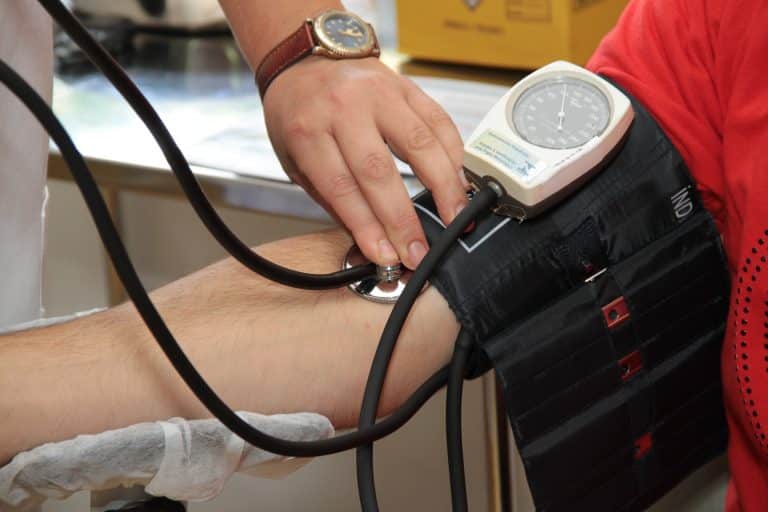CNA Safety and Emergency Procedures 2
Which sudden sign can indicate a stroke?
Strokes can happen quickly. The sooner they are recognized and treated, the better the outcome for the patient. Remember "F.A.S.T." to get help: F=Face drooping. Does one side of the person's face droop? Is their smile uneven? A=Arm weakness. Ask them to raise both arms. Does one arm drift downward? S=Speech. Is their speech slurred or hard to understand? Tell them to say, "The sky is blue." Can they do it? T=Time to call 911. If the person has any of these signs, call 911 immediately, even if the signs go away. Note the time so you can tell the doctor what time the symptoms started.
A patient’s call light should always be _______.
After giving care, or when leaving the patient's room, always ensure that the patient's call signal is within reach. Patents must always have access to caregivers. For safety, bed should be in the lowest position.
Factors that increase a resident's risk of falling include
As people age, their physical and medical conditions can lead to increased risks for falling. Muscle weakness, especially in the legs, is one of the most important risk factors. Medications, and the side effects, can cause dizziness or confusion. Sensory problems, such as numbness in the feet or foot pain increase the risk of falls. Other risk factors include poor vision, balance problems, and slow reflexes.
Vomiting can be dangerous because of the possibility of
Vomit is the contents of the stomach. It is very acidic, which can be dangerous to the lungs if it gets inhaled. Usually the cough reflux keeps anything from entering the lungs, but if a patient is weak, sedated, or elderly, the cough reflex may not be effective. If vomit gets aspirated into the lungs, it can cause choking or pneumonia, which are both life-threatening.
The most common cause of accidents in the home results from
According to the National Safety Council, falls are the number one cause of home accidents. For age 65 and older, falls are the first cause of injury-related deaths, including broken hips. Many falls can be prevented with simple measures, such as removing small rugs and clutter, and wiping up spills.
When a patient who has been dizzy is showering, you should
Showers and baths present a risk for falls. If there is any doubt about a patient's ability to maintain balance, use a shower chair. Sitting in a chair lets the patient be safe while enjoying the warm spray. Before having the patient sit, make sure the shower chair is clean and sturdy. The patient's feet should be able to touch the floor.
Safety measures to prevent accidental poisoning from medications include
Accidental poisoning from medications can be prevented, especially among children, who are at the highest risk. Medications are the leading reason for poisoning in children. About 95% of medication-related poisoning among children happens when medication is available and children are unsupervised. All adults are responsible for storing and dispensing medication safely. Always use childproof tops and keep medications in their original containers. Don't take medications in front of children, who like to mimic adults. Never call medicine "candy." When taking medications during the night, turn on the light to ensure the proper drug and dosage is being taken.
Advertisement
If a diabetic resident develops symptoms of increased thirst and urination, blurred vision, weakness, and a fruity-smelling breath, what should the CNA do?
When a resident with diabetes exhibits signs and symptoms of high blood sugar (hyperglygemia), do not give additional sugar, such as orange juice or candy. Notify the nurse immediately, because the resident needs insulin. If the blood sugar is not lowered, ketoacidois—a serious complication of diabetes—can result. The CNA should be aware of which residents have diabetes, and what to look for regarding reactions.
When evacuating patients during a fire, you should never use the
Never use an elevator when there is a fire. The fire can destroy the electrical circuits, which could trap you and the patients. Elevator shafts also can act as a chimney, filling quickly with smoke. Also, your exit will be delayed by stopping at every floor, since others will press the button.
A resident who is resting in bed suddenly complains of shortness of breath. What should you do?
When a client is having difficulty breathing, Fowler's position can provide relief. When sitting in Fowler's position, the client is upright at 90 degrees, allowing the chest to expand as much as possible. Prone (on the abdomen), supine (on the back), and lateral (on the side) are all flat positions, which can make respiratory distress worse.
While assisting a resident with walking, the resident becomes faint and begins to fall. The nurse aide should
If a resident begins to fall while walking or standing, do not try to catch them or prevent the fall. Call for help. Control the fall by easing them to the floor. This prevents injury to both the resident and the nurse aide. It also allows you to protect the resident's head from hitting the floor or an object. Stay with the resident until help arrives.
A DNR (Do Not Resuscitate) order is part of an advanced health directive for an elderly resident. When you walk in, you discover that they are not breathing. How do you act?
What a person wants at the end of their life is expressed in an advance directive. It eliminates any ambiguity for medical personnel and the patient's family because it is a legal and binding document. The CNA should respect the resident's wishes if they state that they do not want to be revived. When the resident dies, quietly let the nurse know.
What should the CNA do if a diabetic resident starts to exhibit symptoms including increased thirst and urination, hazy vision, weakness, and a fruity breath?
Never give more sugar, such as orange juice or candy, to a diabetic resident who is displaying symptoms of elevated blood sugar (hyperglycemia). The resident requires insulin, so call the nurse right now. A dangerous diabetic complication called ketoacidois may develop if the blood sugar is not brought down. Knowing which residents have diabetes and what to watch out for in terms of reactions is important for the CNA.
What follows the CNA's calling of the Code Blue?
You must make an emergency call as a CNA, lay the patient down, and start performing CPR. Allow the Code Blue crew to take over once they arrive. Be accessible for any requests, including those to record the code, obtain equipment, maintain the area's cleanliness, transport blood to the lab, or place phone calls.
Advertisement
In order to inform you that she had vivid red blood in her bowel movement, a resident turns on her call light. What ought you to do?
When red or blood appears unexpectedly in a resident's feces, a diagnosis should be made. It might be a result of diet or a hemorrhoid, but it might also be an indication of internal bleeding. Notify the nurse so that she can investigate the situation and check in with the resident's physician.
Your home health patient's home is quite messy, and she is unwilling to discard anything. To ________ should be your primary safety objective.
Your aim as a home health care provider is to keep the home safe. Look around for any potential dangers and take steps to reduce or remove them. Move things out of the way; you are not authorized to remove anything. You prioritize the client's health, safety, and wellbeing as a caregiver.


